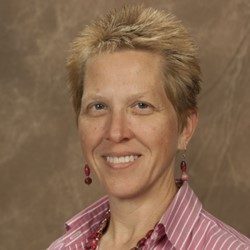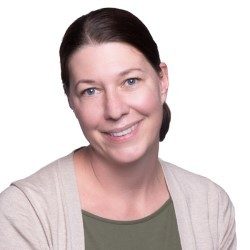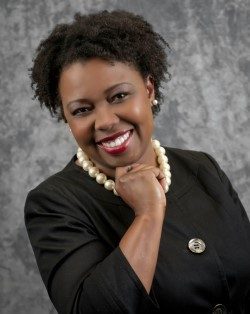by Sarah Derouin for the American Chemical Society
The Committee on Professional Training (CPT) is committed to cutting edge education, top-notch training for students, and providing guidance to create the best chemistry programs possible.
To accomplish such important goals, members of CPT represent all facets of chemistry including professors at universities and colleges and industry professionals. Many members have worn different hats throughout their career, allowing them to see the problems and challenges in chemistry education from different angles.
CPT members know the importance of connecting chemistry to student’s lives and supporting them through their education. They also know that a program is only as good as the students it attracts, trains, and sends out into the world.
STEM for everyone
CPT members Gina Frey Ph.D., Cora MacBeth Ph.D., and Leyte Winfield Ph.D. are advocates of creating a welcoming and nurturing environment for all students. These professors are driven to make sure STEM education is inclusive, and their efforts reflect CPT’s mission.
Frey, a chemistry professor and education researcher at University of Utah, made a career transition from quantum chemistry research to educational research. In part, she changed her research focus after co-leading a first-year college course called “Women in Science.”
“We would talk about the issues that women are going through [in STEM] from the beginning to contemporary time,” says Frey. “That really led me to think about inclusion and equity, and it really got me thinking about social psychology and cognitive psychology.”
While working to improve the chemistry curriculum at her university, Frey was approached by CPT member Clark Landis, Ph.D. about joining the group. “The idea of being able to work nationally, and being with this terrific group of people who are really thinking about curriculum and skills, what’s really needed, and how we can get the best education for our students—that made me very excited,” she says.
MacBeth, Associate Dean of Arts and Science at Emory and professor in the chemistry department, became a chemist, in part, because of her experiential learning experiences. “Throughout my career I participated in research,” she says. “There was somebody that invested time in me, so I wanted to pass that on—it was really important.”
MacBeth strives to help all students engage in research opportunities. “I think it helps round out their education, and it helps them make decisions about what they do long term,” she says. “I don't know how a student would make a decision about being a chemist if they never had an opportunity to practice chemistry outside of their coursework.”
Part of her role as Associate Dean also means helping students see themselves as someone with a well-rounded collection of skills. “STEM students are really bright and have a lot of skills, but they need to feel empowered, like they have self-efficacy,” MacBeth says. She runs grant-funded programs to show STEM students the vast array of jobs they could do with a strong skillset.
Winfield, a professor of chemistry and biochemistry and Division Chair for the Natural Sciences and Mathematics at Spelman, says her approach to education and mentoring is shaped by her own experiences. “Early on, I didn't know what impostor syndrome was. I thought that if I worked hard, then I would get to where I needed to go,” she says. “I didn't know that there were systems that were going to be more difficult for me to navigate.”
This experience shaped Winfield’s career path, both as an educator and CPT member.
“As a professor, I've found that there are things we can do to help someone through their pathway to help them find that passion, and really get them — or keep them — in this space.” She adds that she’s committed to being in academia and to model the type of career success that is possible.
Curriculum meets skills
CPT members create guidelines for chemistry education and chemistry accreditation. But chemistry curriculums do not always look the same—there is room for creativity when covering chemistry concepts.
For example, Winfield says she’s been working for three years on a new certificate program in cosmetic chemistry at Spelman. The program will pull double duty: attracting students to chemistry and covering important topics like polymers and material science.
“It's really interdisciplinary,” says Winfield. “We go through formulation science with just a little bit of chemistry, a little bit of physics, a little bit of engineering, polymer chemistry, a ‘baby’ toxicology course, psychology of beauty, and beauty entrepreneurship.”
She stresses that cosmetic science goes beyond red lipstick—lotions, cleansers, and even medical skin treatments fall under “cosmetics.” Winfield explains that there are large research institutions looking at biopolymers for wound healing and treatments of different skin pathologies.
“It’s polymer chemistry, it’s materials, it’s organic, it’s understanding toxicology—it’s not just we’re going to sell shea butter on Saturday,” says Winfield. “It’s really looking at the science to why these things come together.”
Thinking about new ways to incorporate concepts ties directly to how chemistry education methods. Frey says one of the things that attracted her to CPT was their interest in chemistry pedagogy. “We know that it's not just content, it is how you teach it.”
“For me, teaching is a journey,” says Frey, who also serves on the CPT guidelines committee. “You don’t just learn something and do the same thing forever— you are constantly thinking and learning and improving yourself.”
MacBeth agrees, adding “we know that active and engaged learning leads to better outcomes, better retention. It's a more inclusive way of teaching.” She says the work that CPT does has allowed her to have broader conversations, and clear goals, when she is speaking with other departments about how to balance skills and content.
Frey adds that in addition to fostering creative ways to cover curriculum, CPT has continued to stress the importance of imparting skills in chemistry students. The ability to conduct experiments, communicate clearly, and foster inclusivity are just as important in building a career as course work.
“I think having the guidelines is a source of stability,” says Winfield. “It is a very rigorous process. But it's also a very kind process.” She adds that CPT members are interested in helping schools get ACS approved and are available to them to assist in their journey towards completion.
Winfield also sees the CPT process as a way to contemplate your educational approaches, both as an educator and a department. “I think it gives you that moment of self-reflection and feedback from your peers that really could be helpful, not just towards getting the approval, but to inform what you do in your curriculum,” she says.
Diversity, Equity, Inclusion and Respect
All three members say they are looking forward to working on diversity, equity, inclusion and respect (DEIR) initiatives with CPT. All three scholars have expertise in diversity issues and have done research on DEIR issues.
“Spelman has been number one for producing Black women who get PhDs for 15 years,” says Winfield. She researches diversity and notes that CPT can “pull on my expertise in that space.” She CPT’s work on diversity can be an example for schools and universities who are trying to improve their DEIR.
Frey agrees, adding that CPT is not only shaping DEIR efforts, but also modeling it within the committee. “One of the things I liked about CPT is that there are people from all different areas—we hear all these different perspectives, everybody’s opinions are important, everybody’s voices should be heard, and then we come to some agreement.”
While CPT has not made diversity and inclusion efforts a requirement, MacBeth notes that it is a necessary skill. “We want all students to have an appreciation that diverse teams tend to have more output,” she says. “They tend to be more productive, because you have you have multiple ways of approaching a problem or multiple ways of thinking about a problem.”
“STEM students are really bright and have a lot of skills, but they need to feel empowered, like they have self-efficacy,” - Cora MacBeth, Ph.D.




